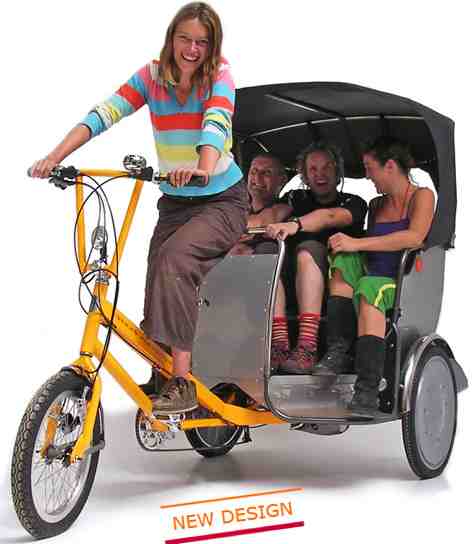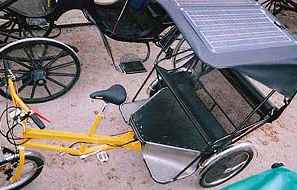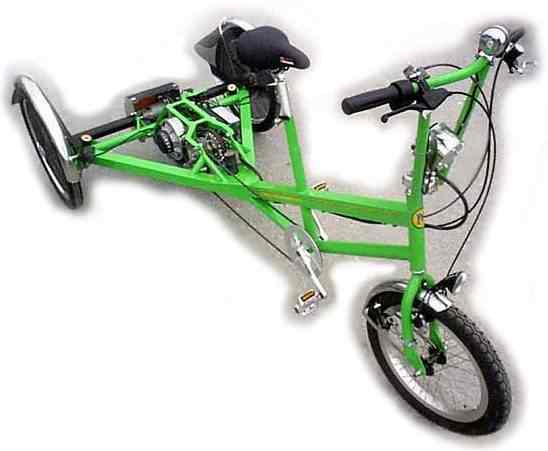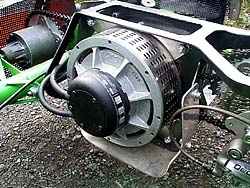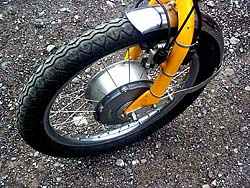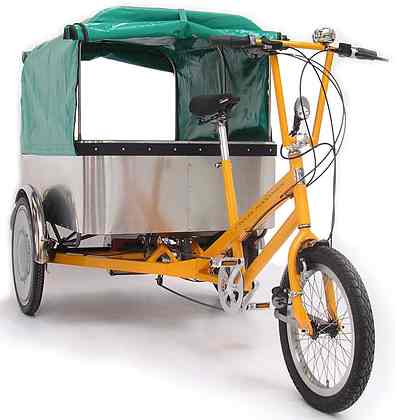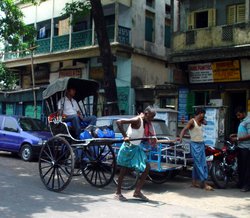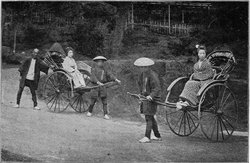|
|||||||||||||||||||||||||||||||||||||||||||||||||||||||||||||||||
|
INTRODUCTION
Most of the cities in developing countries are highly polluted. The main reasons are the air and noise pollution caused by transport vehicles, especially petrol-powered two and three wheelers. For example, in India there are close to 18 million petrol powered two wheelers and about 1.5 million petrol and diesel powered three wheelers and their population is growing at a healthy rate of about 15% per annum.
Besides being a major hazard to peoples health, these machines are guzzling huge amounts of petrol and diesel for which any country has to pay dearly in foreign exchange outflow. In fact it is a common sight in developing countries as much as in the City of London, Paris, Rome or Los Angeles, that during traffic jams in congested areas these vehicles produce tremendous pollution.
Maximus Pedicab ฃ3145 + VAT & delivery
ELECTRIC and SOLAR POWERED RICKSHAWS
An electric cycle rickshaw can provide a non-polluting and a very silent transport system for urban and rural areas and busy cities. The low rolling resistance and light weight make this vehicle very energy efficient and cost effective. Work done at major research Institutions has shown that improved cycle rickshaws powered by electric motors and batteries have a potential to provide an attractive alternative to petrol and diesel powered three wheelers.
Solar Rickshaw ฃ P.O.A.
Besides they can also provide large scale employment and extra income to the rickshaw operator, without affecting his or her health. The Maximus electric Trike featured on this page in three different guises, may be converted to solar power to take advantage of free energy from nature. We would be happy to arrange for bespoke orders to suit your requirements. Such as to include suitably integrated and stylish cab bodies.
EXISTING CYCLE RICKSHAWS
There are guesstimates that close to 1 million cycle rickshaws ply the Indian roads carrying about 3-4 billion passenger-km/year . In some cities they are the major means of transport. They provide employment to about 700,000 rickshaw pullers, are very maneuverable and are completely non-polluting and hence environmentally friendly means of transport. It is very unfortunate that deliberate policies in most of the urban towns of developing countries have been made by the concerned authorities to phase out these rickshaws. These non-polluting vehicles are being replaced by polluting (both air and noisewise) petrol and diesel powered three wheelers. Our data show that three wheeler diesel tempos in Lucknow city (capital of Uttar Pradesh) produce close to 70-80 decibel noise at a distance of 1-2 m, besides belching out huge amounts of particulates into the air .
Nevertheless the existing rickshaws are very poorly designed so that it takes a heavy toll on the health of a rickshaw puller. The existing cycle rickshaw has hardly changed since it was introduced in 1930s and 40s in India. The gearing and the mechanical advantage of the pedal is very poor. Hence the rickshaw puller has to work very hard while climbing even a slight slope. A common sight is of rickshaw puller getting down and pulling on foot the rickshaw with passengers. The braking system is also very poor with only front brakes on the rickshaw. Thus when going downhill at high speeds sudden braking produces a catapult effect. Similarly the seating arrangement is very uncomfortable and the aerodynamic drag of the system is very high.
It is therefore humanly degrading to pull the existing inefficient cycle rickshaw. Yet because of poverty, laborers do become rickshaw pullers and suffer adverse consequences to their health. The rickshaw manufacturing presently is a footpath industry with no quality control and there are as many rickshaw designs as cities in which they ply. These rickshaws are so poorly made that they have to be replaced completely in a couple of years. Thus there is a need to improve the existing rickshaw and bring quality control in its manufacture.
Maximus
bare frame ฃ2345 + 17% VAT & delivery
RICKSHAWS DEFINED
Rickshaws (or rickshas) are a mode of human-powered transport: a runner draws a two-wheeled cart which seats one or two persons. Rickshaws were mainly used in Asia, but nowadays they are outlawed in many places and have been replaced by cycle rickshaws and auto rickshaws (and the term "rickshaw" is today commonly used for these vehicles as well). The last sizeable fleet of true rickshaws can be found in Kolkata (Calcutta), where the rickshaw driver union resisted prohibition. It is a tourists' attraction at Star Ferry pier on at Edinburgh Place, on Hong Kong Island, Hong Kong.
Rickshaws were invented in Japan at the end of the 19th century by a European missionary named Jonathan Scobie, to transport his invalid wife through the streets of Yokohama. The name derives from the Japanese expression jinrikisha (人力車) which means literally 'human-powered vehicle'. The first rickshaw appeared in India around 1880 on the avenues of Simla. Some 20 years later a few of these vehicles arrived in Calcutta, imported by Chinese traders who used them to transport goods.
In 1914 the same Chinese people applied for permission to use them to carry people and it was not long before rickshaws were to be found in many metropolises all over Southeast Asia. For peasants migrating to the big cities the rickshaw offered a means of earning a living. No one knows exactly how many there are today in the streets of Kolkata. Unofficial statistics suggest 50,000, providing employment for twice as many pullers. Economists have calculated that the economic value of rickshaws and their pulling is $6 million - a quarter of the budget of the whole urban transport system of a city like Paris. Accordingly, it makes economic and environmental sense to phase in solar powered Rickshaws to keep the advantages of the basic concept, but improve the service for both operator and passenger.
Maximus Cargo Trike ฃ2795 + 17.5% VAT & delivery
High payload, easy access and flexible weather-proof covering make the Cargo Trike the ideal choice for urban delivery and carriage applications. Bikes are often as fast as vans in town centres, and with freedom from parking restrictions, fossil fuels and road tax, the Maximus Cargo Trike is a clear winner. This is an incredibly economical way of moving goods in a city centre.
RICKSHAW HISTORY
Dhaka, capital of Bangladesh, has become known as the city of Rickshaws. I n fact the main transport of this populous city is cycle Rickshaw. Almost 12 million people live in this city. Rickshaws are growing in number because they are inexpensive and they provide an income for more than quarter million people. Rickshaws in Dhaka are constructed with bi-cycle spare parts, rugs, bamboo sticks and plastic sheets. They are decorated with traditional paintings. The rickshaws with their ornate decorations and imaginative hand paintings have a special place in Dhaka citys transport.
In addition to Dhaka, the Rickshaw is one of the principal means of transport in the urban areas of Bangladesh. With the improvement of road communication throughout the country, the rickshaw has now found its way into rural areas as well. As a mode of transport the rickshaw was first introduced in Japan in the early twentieth century. This mode of transport became particularly popular there due to the Second World War situation, which made petrol and motorised transport scarce and expensive. Japan, however, had soon replaced rickshaws, nintaku in Japanese, with motorised vehicles and by the 1950s the cycle rickshaw had disappeared from Japan.
In the 1930s and early '40s rickshaws became popular in Indonesia, Singapore and other Southeast Asian countries. The rickshaw is said to have reached Chittagong from Myanmar in 1919. Interestingly, rickshaws did not spread out to Dhaka and other cities of Bangladesh from Chittagong. Dhaka got its rickshaws from Calcutta, where it was first introduced around 1930. European jute exporters living in Narayanganj and Netrokona (in Mymensingh) had first imported cycle rickshaw from Calcutta in 1938 for their personal use. The new vehicle roused great curiosity among the people of Dhaka, who were traditionally used to horse carriages, palanquins and city-canal boats. Initially cycle rickshaw did not receive enthusiastic response from users.
Coming soon
The Dhaka city had only 37 rickshaws in 1941 and 181 rickshaws in 1947. Before 1947, Dhaka was a district town, which had a population of 62,469 only according to 1951 census. But in 1998, the city's population grew over 8 million and the number of registered rickshaws in the city was 112,572. The number of rickshaws in all other cities of Bangladesh in that year was 274,265 and in all villages 91,040. Rickshaw and rickshaw vans (also a tricycle vehicle similar to rickshaw but with the difference that instead of passenger seats, these have a flat bed of wooden bars resting on the axle over the rear pair of wheels and they carry goods in small lots) are now fast replacing the traditional transports like horse carriages and bullock carts in the country.
It is a popular guess that the total number of rickshaws in the city is at least two and a half times that of the registered ones and accordingly, the city had at least 280,000 rickshaws in 2000. Estimates based on the figures that each rickshaw is operated by two pullers in morning and evening shifts and the average number of family members of a rickshaw puller is five, suggest that the rickshaws of Dhaka city alone is a source of income for nearly three million people.
Unlike in all Southeast Asian countries, rickshaws in Bangladesh have a lasting foothold. It has established itself with a dominance unmatched by other modes of transport. The predominance of rickshaw as a transport is evidenced by the fact that the percentage-wise traffic composition in Dhaka, Sylhet, Comilla and Rangpur cities are 49%, 78%, 80% and 55% respectively. Other means of transport in Dhaka are, in order of traffic, the (a) cars, jeeps, pick-ups etc. (b) baby taxi, (c) bus, (d) truck, (e) tempo and (f) bicycle. Bicycle, however, is the second in the list of predominant vehicles in cities outside Dhaka.
Fifty percent of the value added in transport sector is being contributed by rickshaws and the mode of transport provides employment and living to people engaged not only as the pullers directly but also as its manufacturers of its mainframe, the body with seat and hoods and its spare parts. A great number of people depends for the living on the decoration of rickshaw body, artwork on it and rickshaw garages. [Sirajul Islam]
|
|||||||||||||||||||||||||||||||||||||||||||||||||||||||||||||||||
|
The
content of this website is copyright ฉ and design copyright 1991 and
2005 Electrick Publications and NJK. All rights reserved. The bird |
|||||||||||||||||||||||||||||||||||||||||||||||||||||||||||||||||
